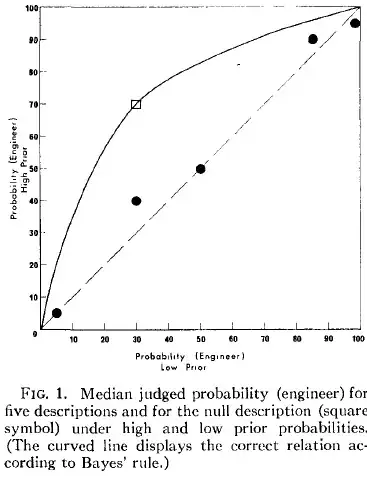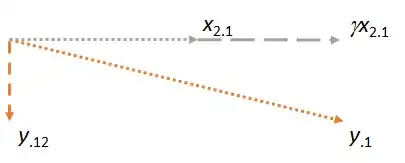Kahneman and Tversky mention that in this graph the value of (high prior group)/(low prior group) should be 5.44.
Kahneman and Tversky call the curved line a "Bayesian line" and I believe I understand how it works. For instance, if the probability at the low prior is 0.5, then the odds are 1. I then take 1 * 5.44 = 5.44, and from there convert back to probabilities 5.44/(5.44+1) = 0.85. Indeed, the y-value of the curved line is approximately 0.85 at the point where the low prior is 0.5.
However, let's say I have another situation and I know that the (high prior group)/(low prior group) should be something else, e.g. 2. I could easily write a program to calculate the correct value for the curved line for low prior group = 0.01, 0.02, 0.03, and so on up to 1. However, I wonder if there is perhaps a more elegant solution.
Kahneman, D., & Tversky, A. (1973). On the psychology of prediction. Psychological review, 80(4), 237.

